Having been a long-time fan of Frank Miller's Sin City comic books, I had high expectations for the film adaptation. Director Robert Rodriguez & Miller himself brought the dark, stark visual style directly from the page to the screen.
I was immediately struck by how authentic the look and feel of the film was to Miller's signature artistic style. The black-and-white cinematography with selective splashes of color was jaw-dropping in its fidelity to the Source material. Rather than feeling like a live-action movie filtered through a comic book aesthetic, it felt like the comics had somehow been transformed into a moving image format. Every frame could have been plucked straight from the page.
The creative decision to film the entire movie against a green screen and compose all the backgrounds in post-production was also genius, as it allowed the direction crew to perfectly recreate Miller's detailed, shadowy environments. From the rain-slicked streets to the smoky interiors of Kadie's Club Pecos, the world of Basin City was chillingly realized. Even more impressive was how seamlessly the live-action blended with the digital backdrops. There was never any obvious demarcation between sets, props, and CGI - it all flowed together cohesively.
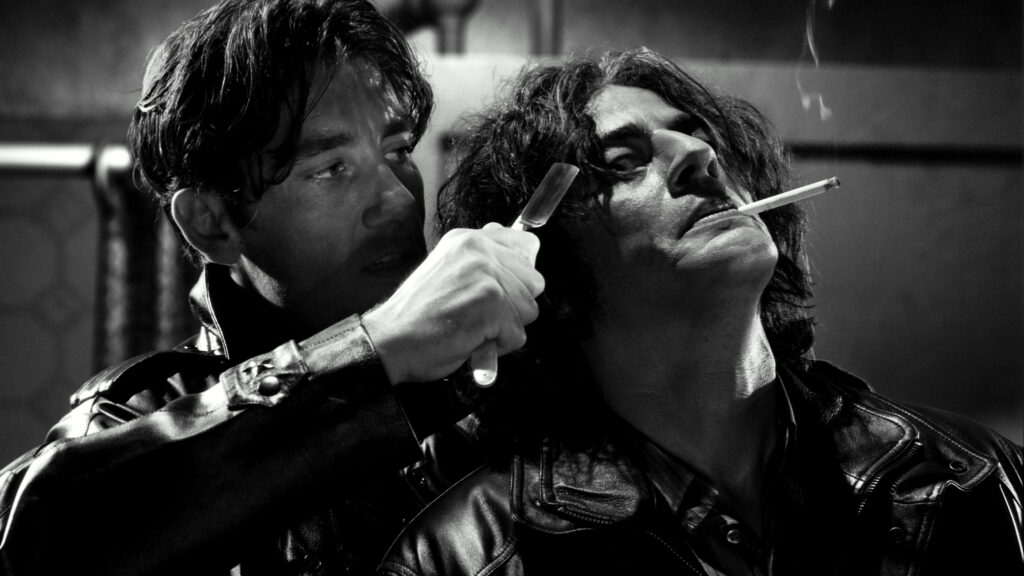
When it came to casting, the filmmakers also picked ideal actors to bring Miller's memorable characters to life. Mickey Rourke was pitch-perfect as the hulking but tragic Marv, expressing so many emotions even with his disfigured makeup. Bruce Willis seemed born to play the aging but still devoted police officer Hartigan. Clive Owen's cool swagger worked well for the two-fisted Dwight.
Jessica Alba and Devon Aoki looked alluring as the tough femmes fatale Nancy Callahan and Miho, respectively. And special credit goes to Nick Stahl and Elijah Wood for their disturbing turns as the creepy antagonists. You truly believed these men were capable of sadism and murder.
Perhaps most impressive was how well the actors adapted to the unusual filming conditions. With no real sets or locations to immerse themselves in, they must have relied entirely on imagination and Miller's vivid source material. But their performances never betray any sense of artificiality - they completely inhabit these roles and this world.
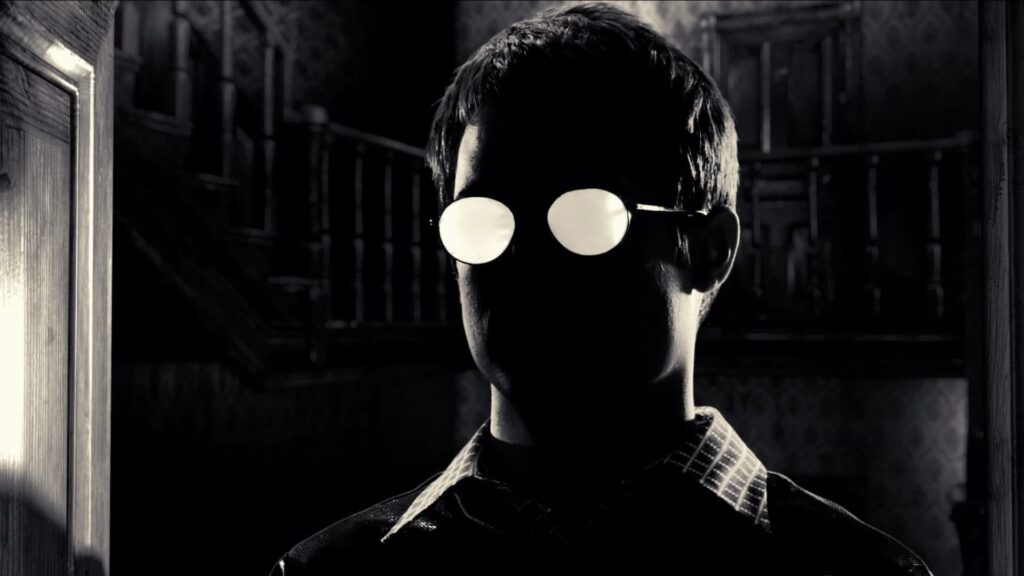
While the visuals and casting were masterful, my highest praise goes to how well Sin City adapts the spirit and style of its source material. As a big fan of the comics, I was nervous about key elements getting lost in translation to another medium. But if anything, Rodriguez respects and enhances Miller's signature noir qualities.
The film noir archetypes are perfectly played - from the hard-boiled heroes and femme fatales to the shadowy low-lives and unrepentant villains. And like the comics, Sin City gleefully revels in sex and violence while smuggling a pulp-inspired moralism at its heart. I was also pleased with how seamlessly the three primary stories ("The Hard Goodbye," "The Big Fat Kill," and "That Yellow Bastard") weave together, just as they do across various issues of the comics.
But what really stood out was how the crew emulated the storytelling techniques unique to comic books - complex panels, dramatic splash pages, dynamic action sequences, and silhouetted dialogue. Entire scenes unfold with the rhythm and flow of a graphic novel. Like the visuals, it makes you feel like watching a live-action comic book unfold.
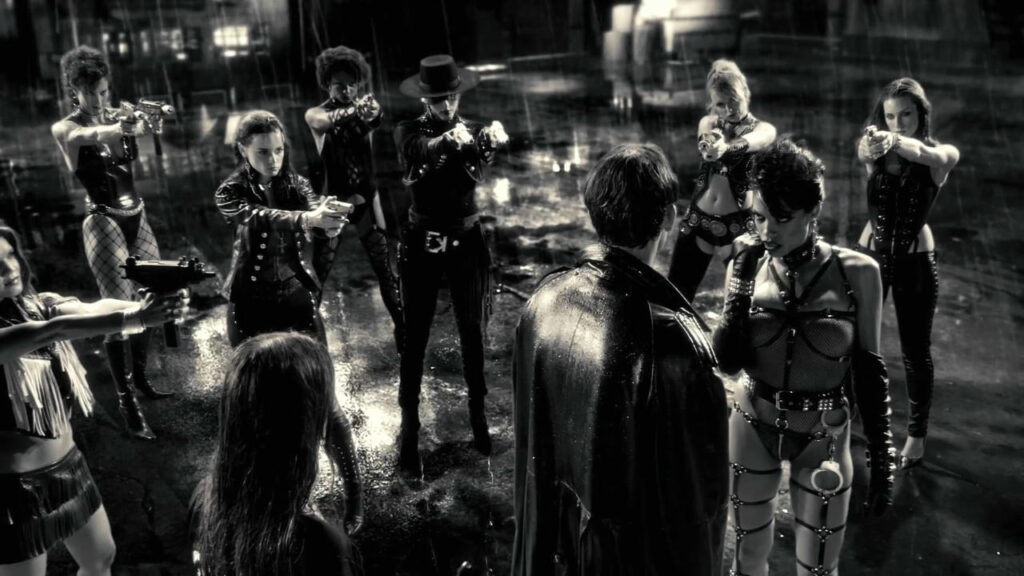
Of course, some elements that worked on the page don't always translate perfectly to film. A few scenes felt slightly redundant or overlong. And some of the pruned dialogue lacks the wit and flair of Miller's scripts. But these qualms are minor in the grand scheme.
While I appreciated the nods to Tarantino's aesthetic in some sequences, his actual directorial role felt unnecessary. It aligned more with Miller and Rodriguez's hyper-stylized strengths. But it didn't ultimately detract from my enjoyment either.
Some critics dismissed Sin City as style over substance, but I couldn't disagree more. Yes, it's a gorgeously rendered feast for the senses, but at its heart lies respect and understanding for the noir tradition that few contemporary films can match. The makers get that it's not just about visuals - the best noirs use the genre to examine the human condition.
And like the comics, Sin City finds moments of surprising empathy even in its most repellent characters. By the film's end, you understand how Marv came to be that way, even if his methods can't be condoned. It's a testament to Miller's writing and Rourke's vulnerable performance.
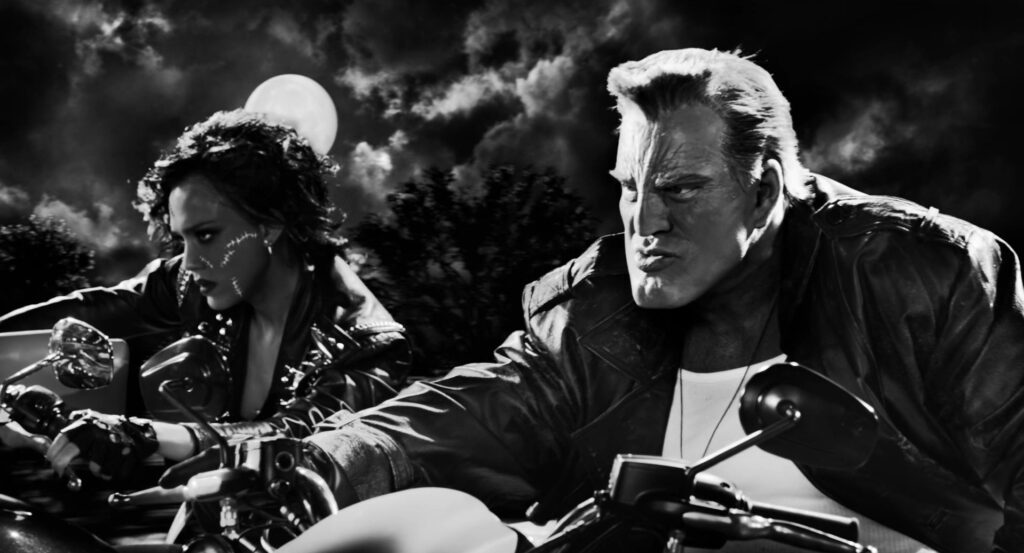
Even today, Sin City remains refreshing in its willingness to strip away artifice and recognize allure, cruelty, and heroism as two sides of the same tarnished coin. There are no easy answers here, no pat redemptions - just people doing brutal, complicated things as fate hurls events their way.
That might explain some of the initial resistance to the film in 2005. Audiences prefer their violence with a side of sentiment. But Sin City's willingness to wallow unflinchingly in the dark underbelly of human nature is precisely why it continues to enthrall. It dares to be uncompromising.
Sin City endures in a highly compromised era of fluff and formula because it reminds us that sometimes surface dazzle is only skin deep, and true art lies in laying bare the soul - however messy and inappropriate that might be. The direction team got Miller's vision from the very beginning.
It's been almost two decades since Sin City first stunned cinemagoers and kicked open the door for more faithful comic book adaptations. But few, if any, have matched its fierce dedication to form following function. To me, it remains the high water mark - a flawless marriage of story and style that so fully realizes its world you feel like you've stepped into the pages of a book. Miller's Basin City never felt more vividly alive.
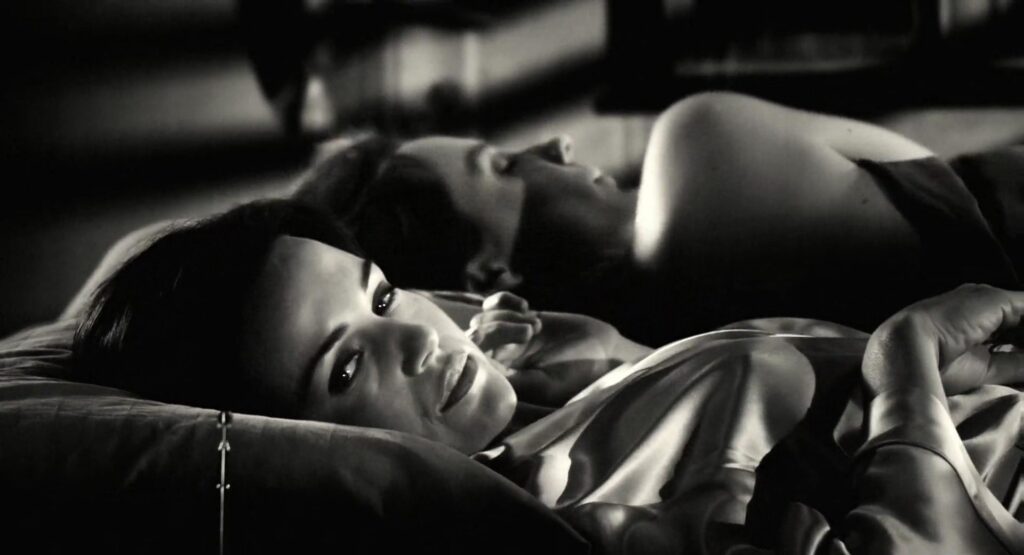
That's why repeated viewings have only deepened my admiration over the years. Like the best pulp tales, its gritty complexities and tonal moodiness reward multiple reads. I peel back another evocative visual craft or texture layer with each viewing. And I remain convinced it's still the gold standard all comic book films should aim for.
So, in summary, Sin City gets my highest recommendation for any fans of film noir, graphic storytelling, or Robert Rodriguez's signature flicks such as Planet Terror or Desperado. It amazes me that a production this ambitious ever got greenlit in the first place. But I'm deeply glad it did because it opened many doors and enriched the cinematic art form. Whenever I need a concentrated cool or want to bathe in a stygian atmosphere, I know (BA)SIN CITY always awaits me. Sin City remains almost peerless in atmosphere, style, and respect for its source.
Movie Rating: 4/5
Note: 3 is the median. Anything above 3 is a recommended watch.